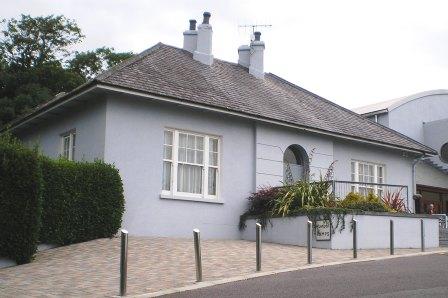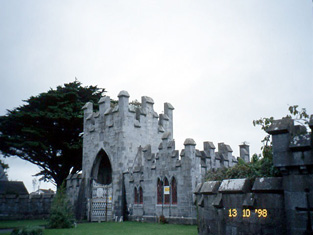Tubrid House
Houses within 5km of this house
Displaying 8 houses.
Houses within 5km of Tubrid House
Displaying 8 houses.
| House name | Description | |
|---|---|---|
| Ballyroe Lodge | Sir Edward Denny was leasing this property to Pierce Chute at the time of Griffith's Valuation when it was valued at £17 15s. Bary writes that it was built by Pierce Chute, possibly in 1836, according to O'Donovan. The Chutes continued in residence until the late nineteenth century after which it had a succession of owners. It now forms part of the Ballyroe Heights Hotel complex. |

|
| Listrim House | Sir Edward Denny was leasing Listrim House to Robert Fortune at the time of Griffith's Valuation, when it was valued at £12 10s. In the 1830s the Ordnance Survey Name Books record that it was the residence of Henry Oliver by whom it was supposedly erected in 1836. It is now a ruin. | |
| Lisadale Lodge | John Busteed was leasing Lisadale Lodge from William Howard at the time of Griffith's Valuation, when it was valued at £6 10s. The Ordnance Survey Name Books record it as the residence of William Howard, by whom it was supposedly built, in 1836. Bary writes that the house may have been a hunting lodge. It is now ruinous. | |
| Doon House | At the time of Griffith's Valuation, William M. Hickson was in possession of this property, then valued at £9 15s. | |
| Ardfert Abbey | William T. Crosbie was in possession of Ardfert Abbey at the time of Griffith's Valuation, when it was valued at £62. Lewis, writing in 1837 and Leet, in 1814, note the house as the residence of the Earl of Glandore.It was the home of Lt-Col. John Darnley Talbot Crosbie in 1894. In 1906 it was the property of L.T Crosbie and valued at £66. Bary writes that the original house built here by the Crosbies was destroyed in the 1641 rebellion and another erected in the early 18th century. The Ordnance Survey Name Books quote the inscription relating to the original house from 1635. It remained the residence of the family until the late nineteenth century when it passed to John Talbot, whose son, William Talbot-Crosbie, then inherited. The house was burnt during the Civil War in 1922 and only the elaborate entrance gate remains.. |

|
| Sackville House | William T. Crosbie was leasing this property to Sarah Heck at the time of Griffith's Valuation, when it was valued at £22 10s. Lewis records it as the property of the Crosbie family but resided in by Rev. R. Maunsell in 1837. Leet, in 1814, noted Sackville as the residence of John Saunders. In 1786, Wilson mentions Sackville " a very neat house, newly erected" as the seat of Rev. Thomas Graves, Dean of Ardfert. In 1906 it was the property of L.T. Crosbie and valued at £25. Bary states that Sackville was built by Thomas Graves, dean of Ardfert, in 1788, as there was no Glebe house there. It was named for Diana Sackville, wife of John Crosbie, second Earl of Glandore. It was leased by the Crosbies or lived in by one of the family for much of the nineteenth century. It was sold in the twentieth century and demolished in the 1950s. | |
| Fortwilliam | Thomas B. Hurley was leasing this property from the Talbot-Crosbie estate at the time of Griffith's Valuation, when it was valued at £18 10s Lewis records the house in Killahan parish when he notes that it as belonging to the representatives of the late W. Collis in 1837. Leet states that William Fitzgerald was resident at Fortwilliam in 1814. . Bary writes that, according to O'Donovan, this house was built by William Collis in 1798. It is no longer extant. | |
| Abbeylands | In 1906 L.T, Crosbie owned a property at Skrillagh, valued at £17. This townland also belonged to the Crosbie estate at the time of Griffith's Valuation, when it was let to the McElligott family. Bary states that the house, Abbeylands, was built in the 1870s as a residence for George Trench, agent to the Crosbie estate. In 1901 it was occupied by Ross Palmer and his family, JP for county Kerry and creamery owner. It was burnt in 1921 but restored later in the twentieth century and is now an ecumenical retreat centre. |

